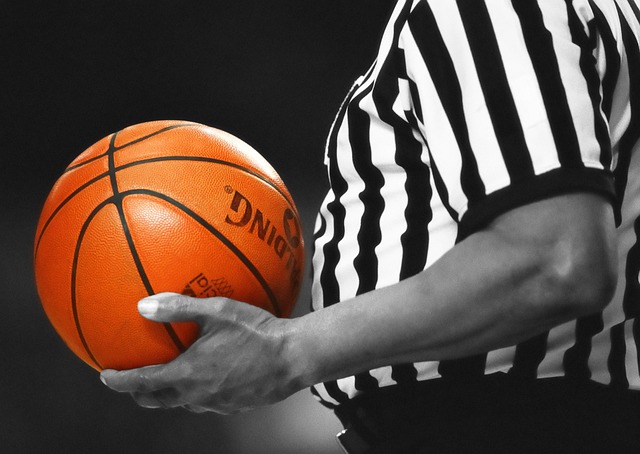How Much Does a Basketball Weight: The Ultimate Guide
Basketball is a popular sport played worldwide, and one of the most critical factors that determine the gameplay is the weight of the basketball. In this comprehensive guide, we will explore all the details surrounding the weight of a basketball. We will cover everything from the standard weight of a basketball to the variations of basketball weight used in different leagues and much more.

Understanding the Basics of Basketball Weight
Before diving into the specifics of basketball weight, let’s understand the basics of basketball. The game involves two teams with five players each, who try to score points by throwing a ball through a basket. The ball used in the game is spherical, and it comes in various sizes and weights.
The Standard Weight of a Basketball
The standard weight of a basketball is 22 ounces or 1.4 pounds. This weight applies to all official basketball games, including high school, college, and professional leagues. The ball’s circumference is 29.5 inches, and it has a pressure range of 7.5 to 8.5 pounds per square inch (psi).
Variations in Basketball Weight
While the standard weight of a basketball is 22 ounces, there are variations in weight used in different leagues. For instance, a youth basketball may weigh anywhere from 14 to 16 ounces, while a women’s basketball may weigh between 18 and 20 ounces. In the NBA, the official weight of the basketball is the same as the standard weight, but the ball’s material is different, providing a different feel and grip.
Factors Affecting Basketball Weight
Several factors can affect the weight of a basketball. One significant factor is the material used to construct the ball. Leather, synthetic leather, and rubber are common materials used for basketballs, and each has a different weight. Another factor is the air pressure inside the ball, which can affect the weight and the ball’s bounce. The temperature of the ball and the air inside it can also affect its weight.
Importance of Basketball Weight in the Game
Basketball is a dynamic and fast-paced sport that requires a delicate balance of skill, athleticism, strategy, and equipment. While elements like technique, teamwork, and strategy play a significant role in the game, the equipment used, including the basketball itself, holds a vital place in shaping the overall experience and outcome of a match. One often overlooked aspect of basketball equipment is the weight of the basketball, which has a substantial impact on the game. The weight of the basketball influences player performance, shooting accuracy, ball handling, and overall gameplay.
Shooting Accuracy:
The weight of the basketball has a direct influence on shooting accuracy. A basketball that is too heavy might require players to exert more force when shooting, potentially affecting their shooting form and accuracy. Conversely, a ball that is too light could lead to overshooting as players may struggle to gauge the appropriate amount of force required. Manufacturers carefully design and standardize basketball weights to ensure that players can consistently develop muscle memory and shooting techniques that lead to accurate shots.
Ball Handling:
Dribbling, passing, and other ball-handling skills are fundamental to basketball. The weight of the basketball significantly impacts a player’s ability to control the ball. A basketball that is too heavy could be difficult to control during dribbling, making it challenging for players to execute crossovers, spin moves, and other dribbling techniques effectively. On the other hand, a ball that is too light might be harder to handle during fast-paced plays, leading to turnovers.
Game Pace and Fatigue:
The weight of the basketball can also influence the overall pace of the game and players’ fatigue levels. A heavier ball may slow down the game, as players need to exert more energy to dribble, pass, and shoot. This can lead to a more deliberate and controlled style of play. Conversely, a lighter ball might encourage faster plays and transitions, potentially increasing the overall pace of the game. The weight of the basketball thus contributes to the tactical decisions coaches make during the game, including whether to play a fast-paced game or a more controlled, deliberate one.
Uniformity and Consistency:
To ensure fairness and consistency in basketball games, the weight of the basketball must be standardized across different levels of play. Whether it’s a professional league, college, high school, or youth competition, having a consistent basketball weight ensures that players can transition seamlessly from one level to another without major adjustments. This standardization promotes fair play and allows players to focus on their skills and strategies rather than adjusting to variations in equipment weight.
Player Development:
For young players who are still developing their basketball skills, using an appropriately weighted basketball is crucial. It helps them learn proper shooting mechanics, ball-handling techniques, and passing skills from an early age. Starting with the right equipment enhances their development and minimizes the risk of developing bad habits due to compensating for a ball that is too heavy or too light.
The weight of the basketball is a seemingly small but crucial aspect of the game that has a profound impact on player performance, shooting accuracy, ball handling, and overall gameplay. Manufacturers, coaches, and players alike recognize the significance of using a standardized basketball weight to maintain fairness, consistency, and optimal skill development in the sport of basketball.
How to Choose the Right Basketball Weight
Choosing the right basketball weight is essential for optimal gameplay. For beginners, it is advisable to start with a ball that is lighter than the standard weight. As the player gains experience and strength, they can switch to a heavier ball. The type of ball used in a game also depends on the age and skill level of the players.
Maintaining the Weight of a Basketball
Properly maintaining the weight of a basketball is essential to ensure the integrity of the game and the players’ performance. A basketball’s weight can affect various aspects of gameplay, including shooting accuracy, ball handling, and overall player experience. To keep the basketball’s weight consistent and in line with the standards set for the sport, certain practices and considerations should be observed:
Storage:
Store basketballs in a controlled environment with moderate temperature and humidity levels. Extreme heat or cold can affect the materials and air pressure inside the ball, potentially altering its weight and performance. A consistent storage environment helps maintain the basketball’s intended weight.
Inflation:
Regularly check and maintain the air pressure of the basketball. An under-inflated ball might feel heavier and have a negative impact on player performance. Conversely, an over-inflated ball might feel lighter and affect shooting accuracy and ball handling. Use a reliable air pressure gauge to ensure the basketball is properly inflated according to the recommended pressure range.
Quality Inspection:
Periodically inspect the basketball for any signs of wear and tear, including cuts, cracks, or punctures. Damaged basketballs can potentially lose air, affecting their weight and performance. If you notice any damage, repair or replace the basketball as needed.
Cleaning:
Regularly clean the basketball using a damp cloth to remove dirt, sweat, and debris. Cleaning helps maintain the ball’s surface texture and grip, which can influence ball handling and shooting accuracy. Avoid using harsh chemicals that might damage the ball’s material.
Proper Usage:
Encourage players to use basketballs only on appropriate playing surfaces, such as indoor courts or outdoor courts with smooth surfaces. Playing on rough or abrasive surfaces can wear down the ball’s surface and affect its weight and performance.
Rotation:
If you have multiple basketballs for practice or play, rotate their usage to distribute the wear evenly among them. This helps prevent one ball from becoming significantly worn and potentially affecting gameplay.
Standardization:
Use basketballs that adhere to the official weight standards set by the governing bodies of the sport. This ensures consistency in gameplay and fair competition at all levels.
Transportation:
When transporting basketballs, avoid placing heavy objects on top of them or subjecting them to pressure that could alter their shape or weight.
Seasonal Adjustments:
Be aware that temperature changes can affect air pressure inside the basketball. Adjust the inflation levels as needed to maintain consistent air pressure and weight.
Regular Maintenance Schedule:
Create a maintenance schedule for checking and maintaining the basketballs. This could include checking air pressure before each practice or game and conducting thorough inspections at regular intervals.
By following these guidelines, players, coaches, and basketball enthusiasts can ensure that the weight of the basketball remains consistent, allowing for accurate gameplay, skill development, and a fair sporting experience. Proper maintenance not only preserves the basketball’s performance but also upholds the integrity of the game.
FAQs
What is the standard weight of a basketball?
The standard weight of a basketball is 22 ounces or 1.4 pounds.
What is the circumference of a basketball?
The circumference of a basketball is 29.5 inches.
Why is the weight of a basketball important in the game?
The weight of a basketball is essential in the game as it affects the player’s accuracy and control.
How can I choose the right basketball weight?
Choosing the right basketball weight depends on the player’s age, skill level, and experience. Beginners can start with a lighter ball and progress to a heavier ball as they gain strength and experience.
How can I maintain the weight of my basketball?
Proper maintenance of a basketball is essential to maintain its weight and prolong its lifespan. Keeping the ball clean and dry, storing it in a cool and dry place, and avoiding exposure to extreme temperatures can help maintain the ball’s weight and performance.
Conclusion
The weight of a basketball is a critical factor in the game, and it affects the player’s performance and control. The standard weight of 22 ounces is carefully chosen to ensure optimal gameplay and fair competition. Choosing the right basketball weight depends on the player’s age, skill level, and experience. Proper maintenance of the ball is essential to maintain its weight and prolong its lifespan.
In summary, the weight of a basketball is an essential aspect of the game, and understanding its specifics is crucial for optimal performance. By following the guidelines outlined in this guide, you can choose the right basketball weight, maintain the ball’s weight and performance, and enjoy a great game of basketball.



